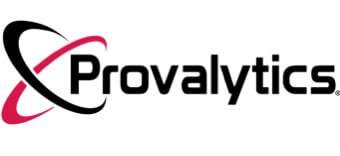The Potential of Marketing Mix Modeling for Enhanced ROI
Are you searching for a means to maximize the return on your marketing budget? Look no further than Marketing Mix Modeling, a robust tool that leverages historical data on marketing expenditures and business outcomes to shape future marketing strategies. However, its scope extends beyond mere financial metrics; it takes into account a plethora of variables that can impact business performance, including product pricing, inventory management, word-of-mouth referrals, and even weather patterns.

🚀 Yes, I Want The 2024 Playbook!
How Marketing Mix Modeling Empowers Data-Driven Choices
The versatility of marketing mix modeling was showcased by applying its principles to gardening. Here, each plant serves as an analogy for a distinct marketing channel, necessitating unique care and attention. Gardeners can now make data-driven decisions about what to cultivate and how to nurture their crops, keeping a vigilant eye on plant performance and external influencers such as weather dynamics.
This invaluable tool is not restricted by industry or business size; it caters to all. Organizations can make well-informed judgments about future marketing budget allocations by dissecting past data on marketing expenditures and their resulting impact on business performance. For instance, they can use data analysis to pinpoint the marketing channels delivering the highest return on investment (ROI) and then adjust their budgets accordingly.
The Strategic Advantages of Marketing Mix Modeling
Furthermore, marketing mix modeling equips companies to factor in external variables that may sway business performance. By scrutinizing data pertaining to elements such as product pricing, inventory levels, and referrals, businesses can align their marketing strategies more effectively with prevailing market conditions.
The merits of adopting marketing mix modeling are palpable. Businesses stand to optimize their marketing spend, enhance ROI, and gain profound insights into future marketing strategies by embracing this data-centric marketing approach. The implementation of marketing mix modeling is now more accessible than ever, thanks to the availability of potent data analytics tools, exemplified by IBM Watson Marketing Insights.
Whether you possess a green thumb or are at the helm of a thriving enterprise, marketing mix modeling offers a path to informed decision-making and heightened success. This approach, which delves into historical data while considering external influences, presents an alluring means of refining marketing spend and elevating business performance. So, why not give it a try and witness the transformative effects firsthand?
How does Marketing Mix Modeling relate to gardening, as mentioned in the article?
In the article, Marketing Mix Modeling was compared to gardening to illustrate its versatility. Just as gardeners make data-driven decisions about planting and caring for crops by monitoring plant performance and external factors like weather, businesses can use this tool to make informed decisions about marketing channels and strategies.
Can Marketing Mix Modeling be applied to businesses of all sizes and industries?
Yes, Marketing Mix Modeling can benefit businesses of all sizes and across various industries. By analyzing past data on marketing spend and business outcomes, companies can allocate marketing budgets more effectively and tailor their strategies to achieve better results.
What external factors does Marketing Mix Modeling consider when analyzing business performance?
Marketing Mix Modeling takes into account external factors such as product prices, inventory levels, word-of-mouth referrals, and even weather patterns when evaluating their impact on business performance.
How has the accessibility of Marketing Mix Modeling improved in recent times?
The implementation of Marketing Mix Modeling has become more accessible due to the availability of powerful data analytics tools like IBM Watson Marketing Insights, making it easier for businesses to harness the benefits of this data-driven approach.

